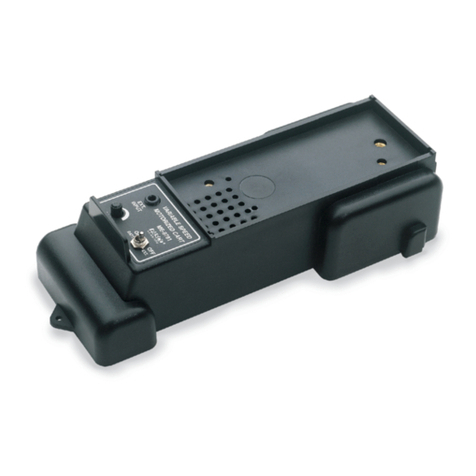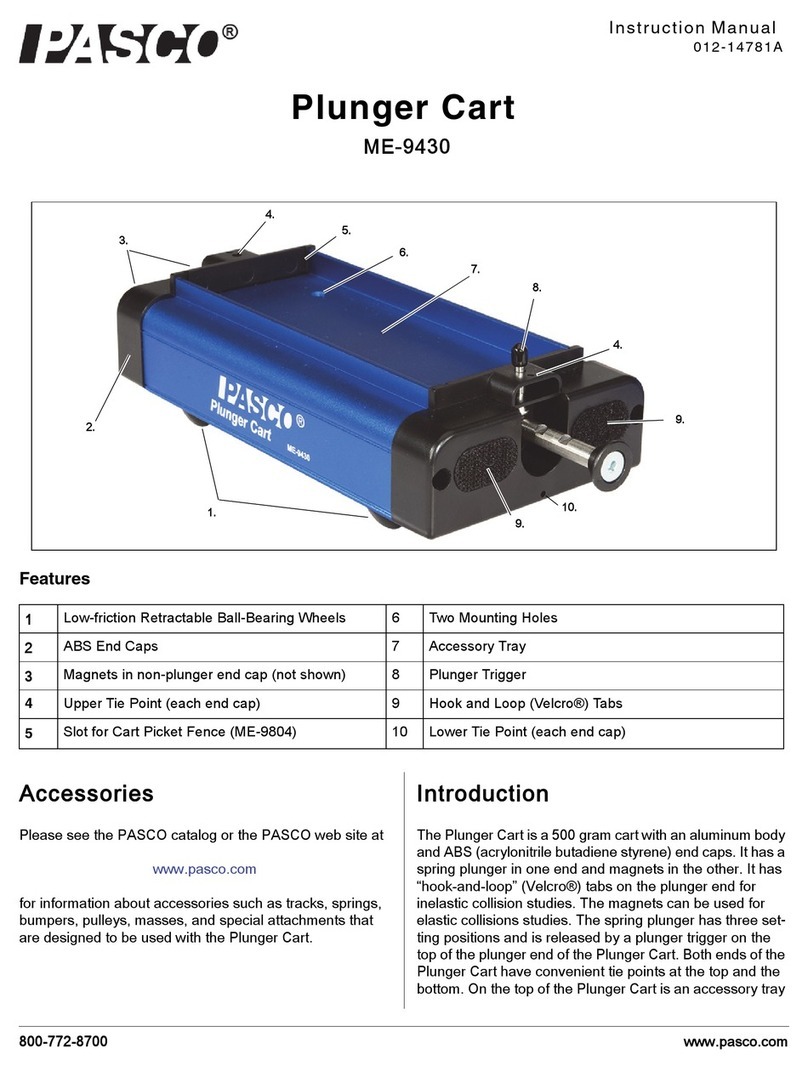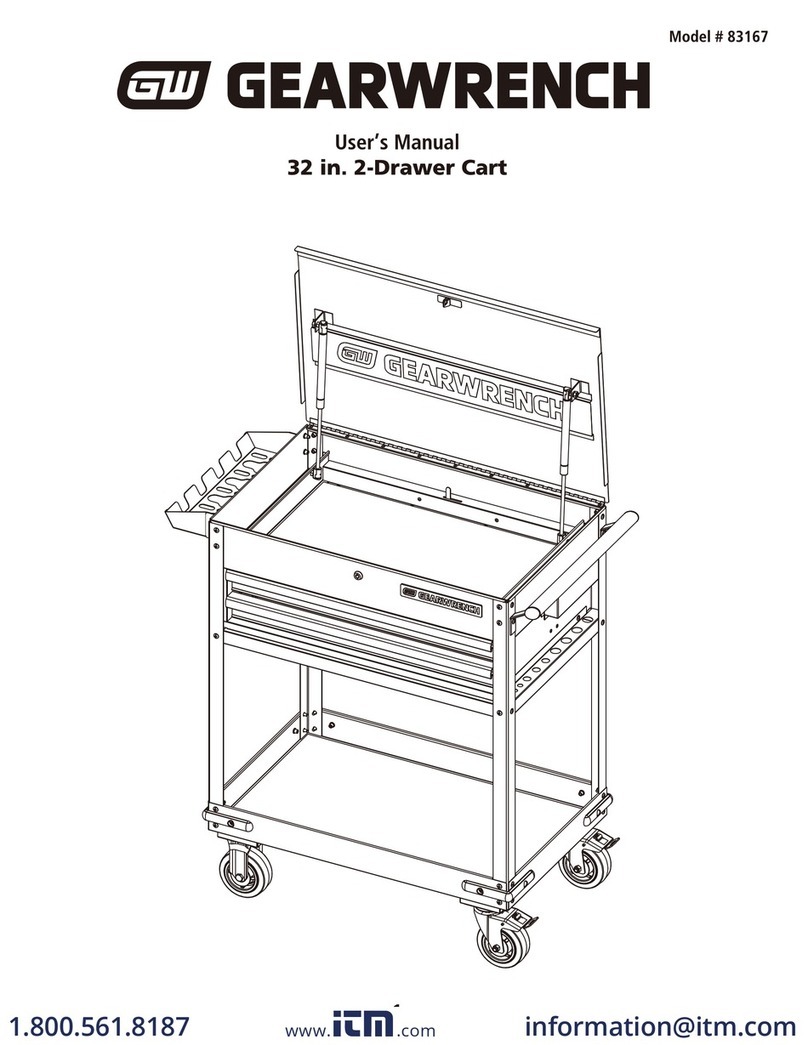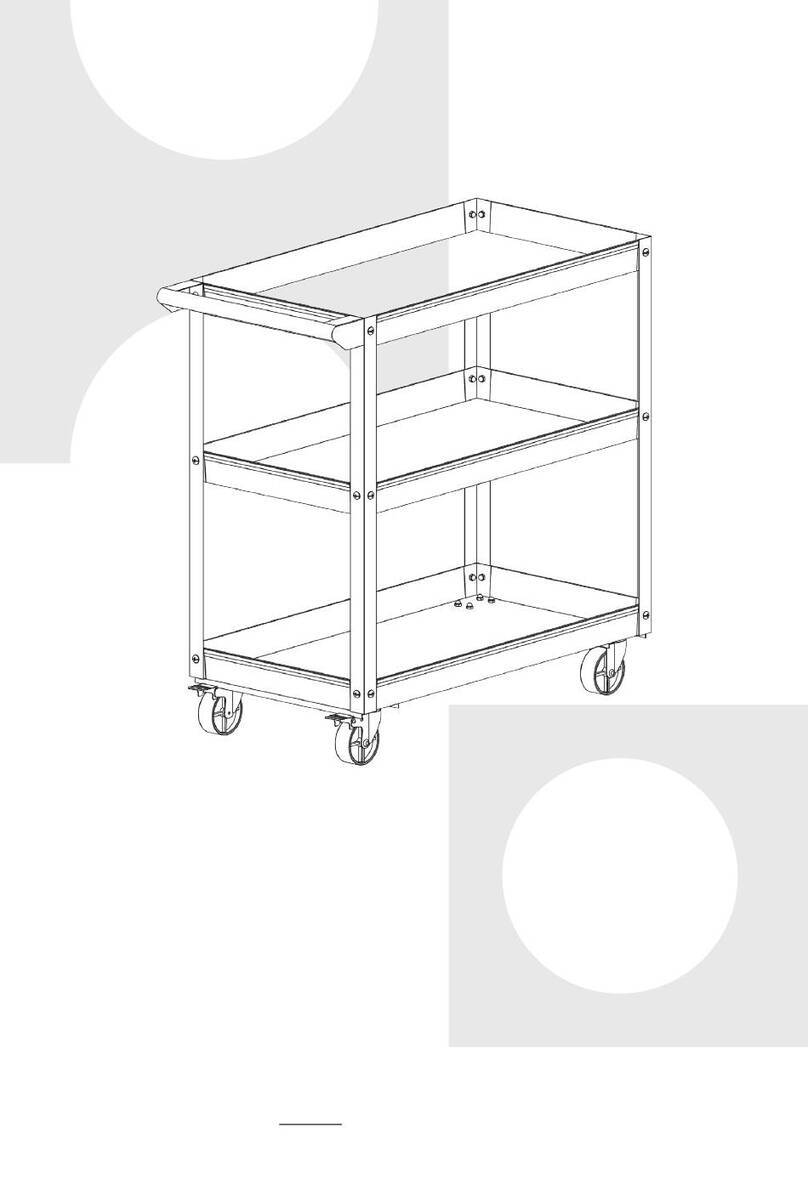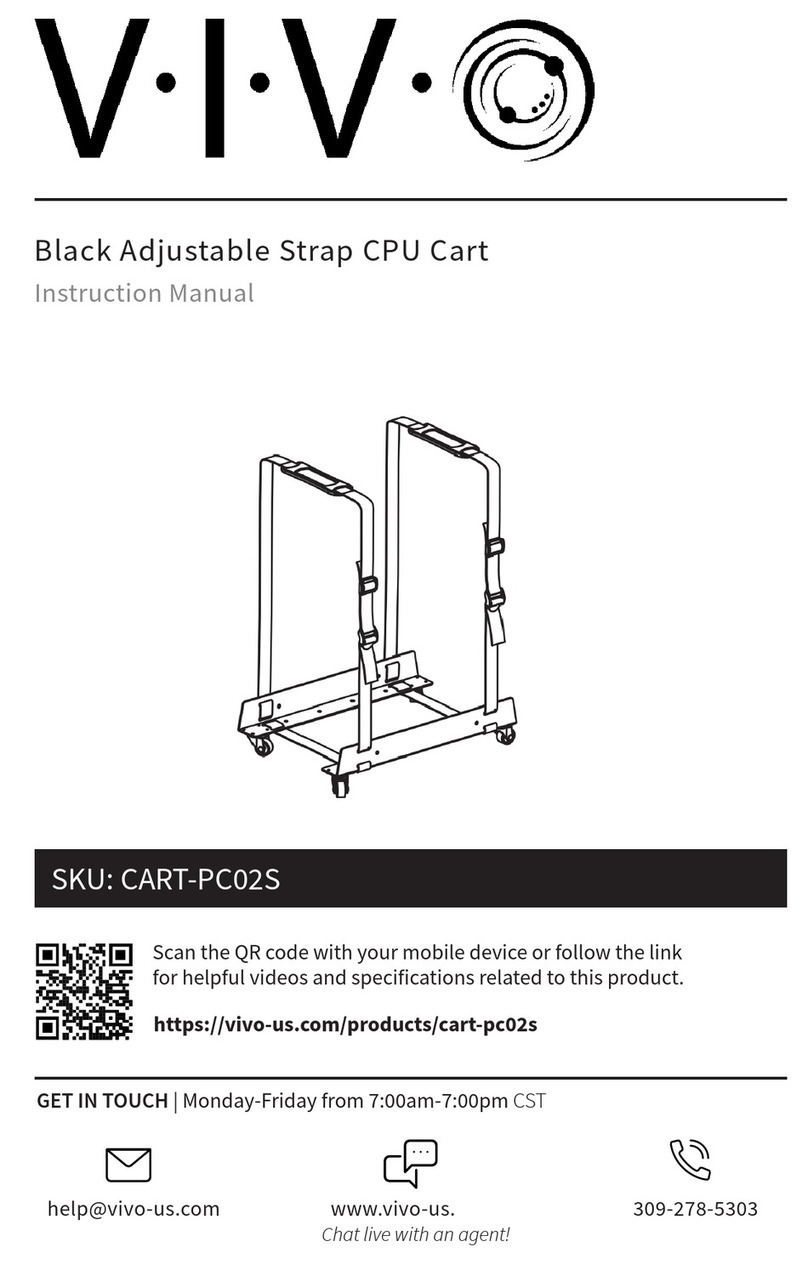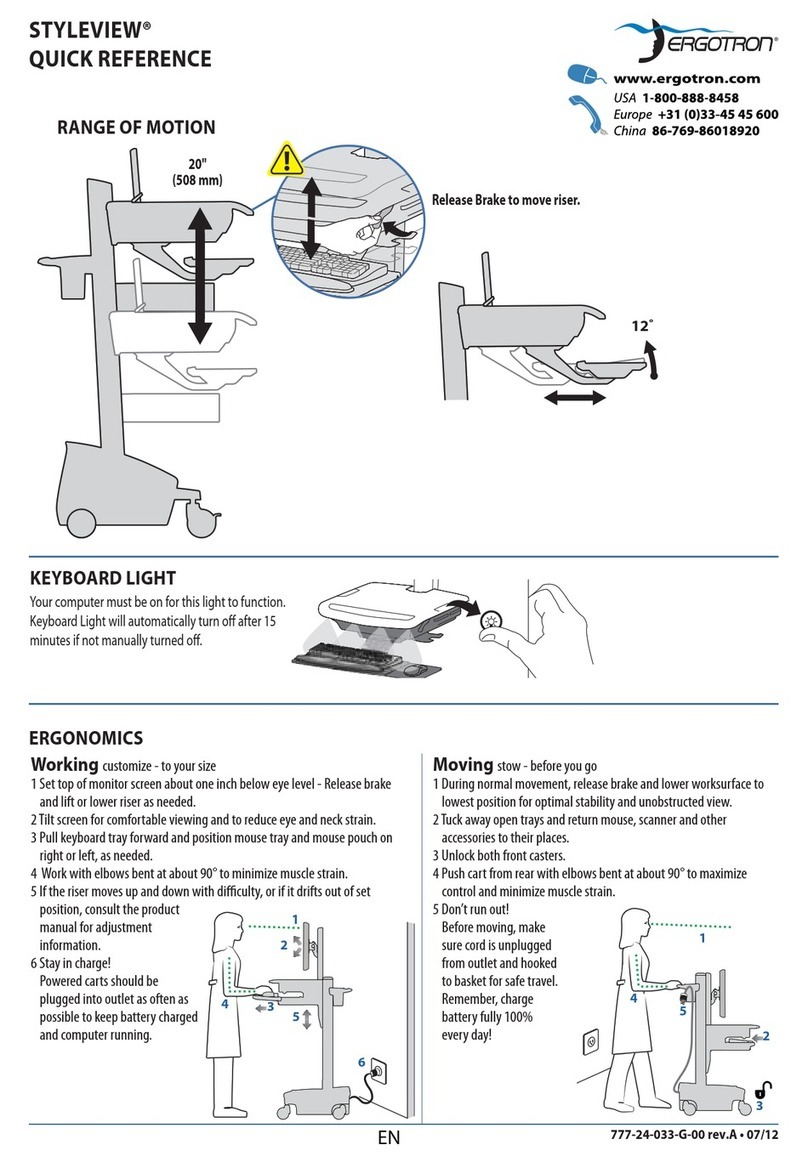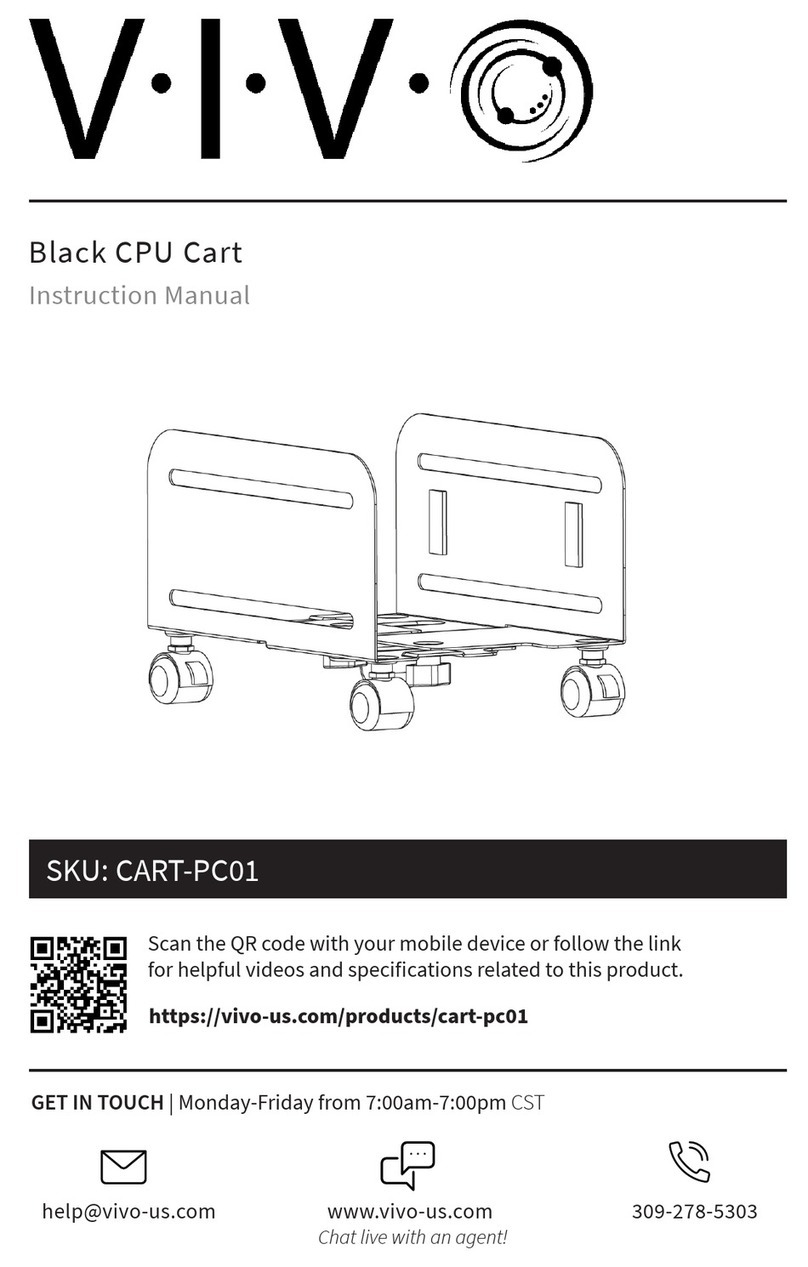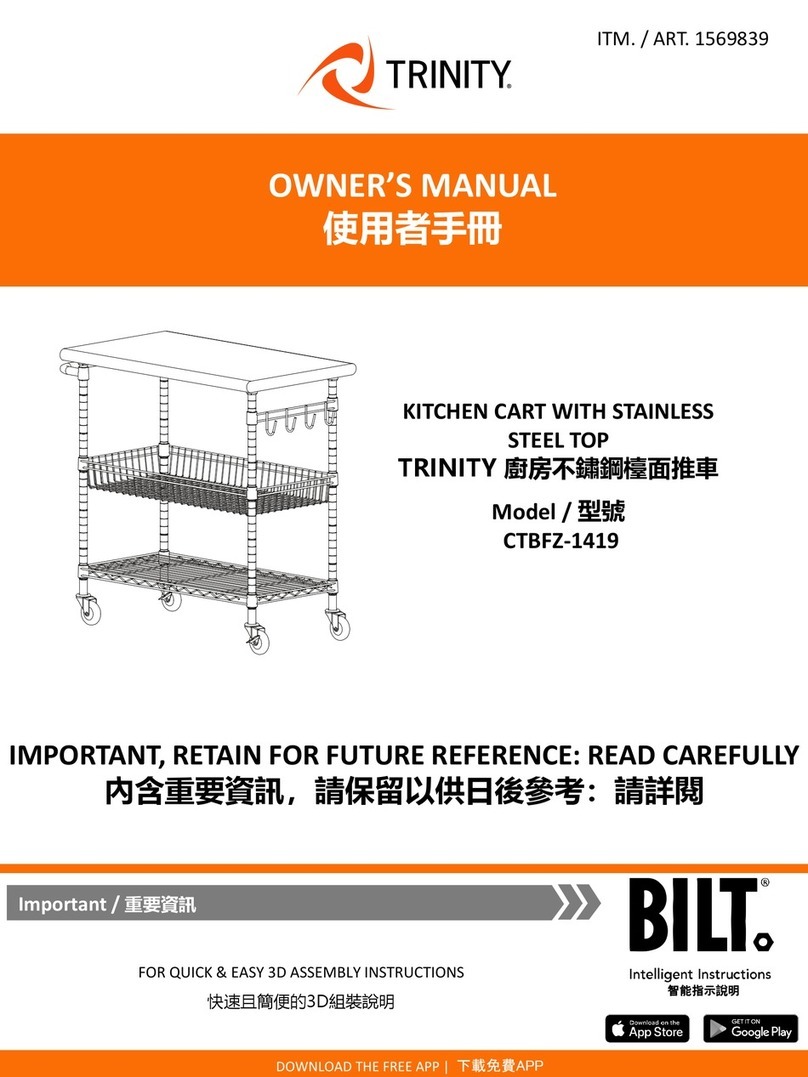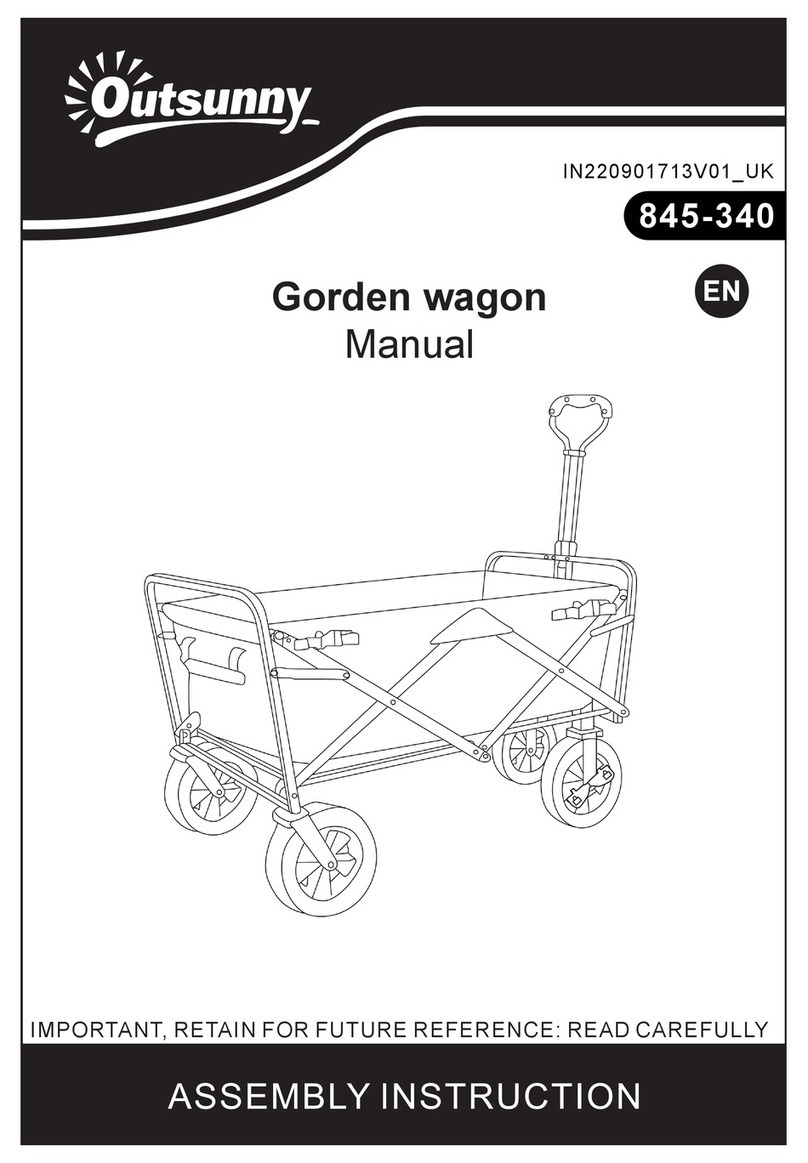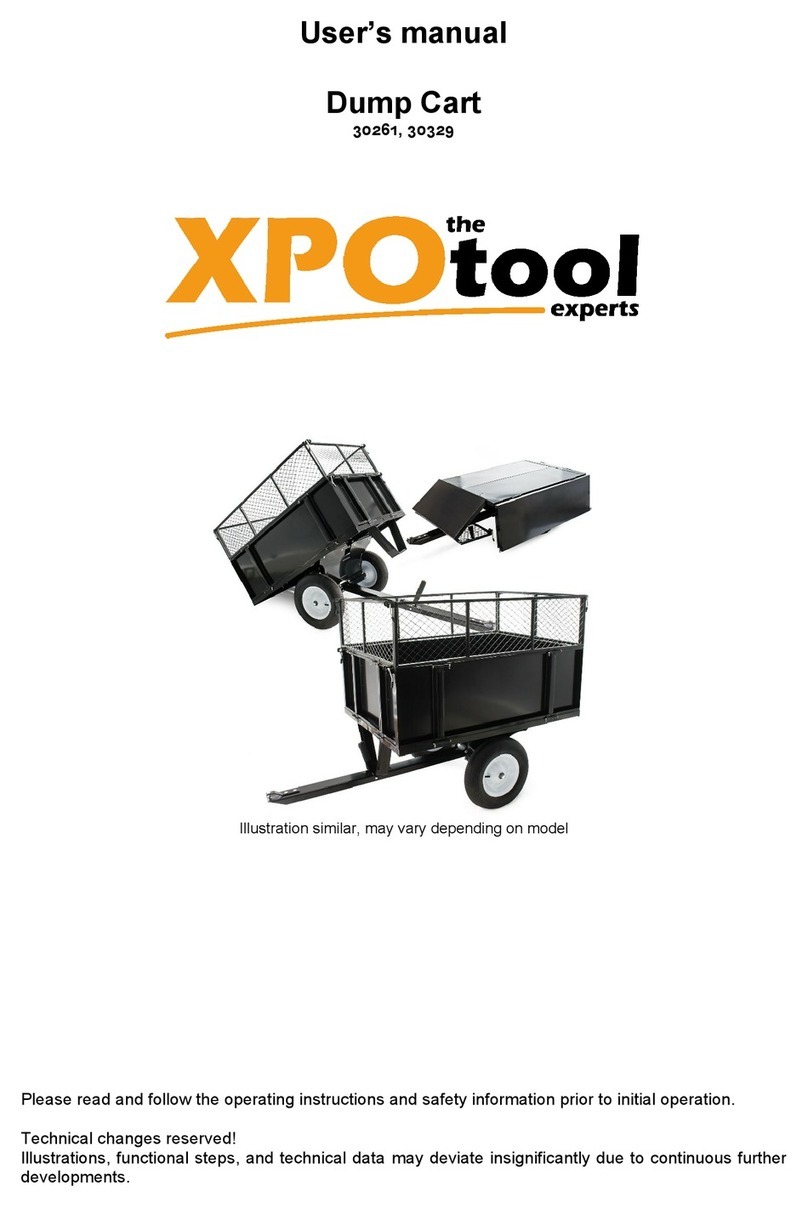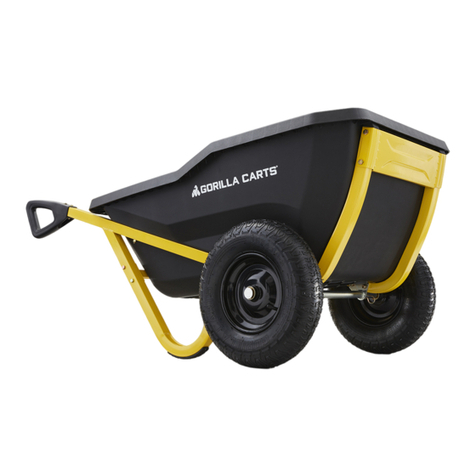PASCO ME-1240 User manual

Wireless Smart Cart [ME-1240 (Red) / ME-1241 (Blue)]
Introduction
The Wireless Smart Cart is a combination wireless and USB
device that connects to a computer or tablet through Bluetooth,
or to a computer or USB charger through an included micro USB
cable. The Smart Cart has a durable ABS body, a three-position
plunger, and nearly frictionless wheels. It includes built-in
sensors which measure acceleration in three dimensions,
position, velocity, and force. The Smart Cart also includes a
gyroscope-type sensing element which can measure rotational
motion. The Smart Cart can make its measurements on or off a
dynamics track and transmit them wirelessly. For easy
identification, the Smart Cart is available in red or blue.
The accessory tray on the top of the Smart Cart can hold any
accessory designed for a PASCO cart except the Spring Cart
Launcher (ME-6843). The Smart Cart has the same dimensions
as other PASCO carts and can be used with any PASCO track.
The Smart Cart can be stacked with any PASCO cart and has a
mass of approximately 0.250 kilograms (250 grams). It has
attachment points on the top and bottom of both ends, as well as
Velcro® tabs for inelastic collisions on one end. The magnetic
bumper, bumper attachment, and hook attachment fit into the
threaded hole in the end of the Smart Cart opposite to the tabs.
The built-in sensors measure force in the range between -100
newtons (N) and +100 N, acceleration in the range between
-16 g and +16 g (where g = ±9.8 m/s2), and angular rotation rate
up to ±145 degrees per second (dps). The cart measures force
as a push or pull along its x-axis and measures acceleration in
three dimensions (x, y, and z). PASCO Capstone or SPARKvue
can also show the resultant acceleration. The encoder wheels
on the Smart Cart measure velocity to a maximum of 3.0 meters
per second; the wheels have a position resolution of 0.2 mm.
The positive direction of motion is the same as the x-axis in the
printed graphic representing the acceleration sensor’s position.
The Smart Cart is designed to optimize battery usage time and
will turn off after about five minutes if not connected to the
software. Since each Smart Cart has a unique device ID
number, more than one can be connected to a computer or
tablet at once.
+X
+Y
+Z
Three-position plunger
Acceleration and gyro sensor position
Attachment point
Hook attachment
Attachment point
Equipment
Included equipment:
Wireless Smart Cart (ME-1240 or ME-1241)
Magnetic bumper
Bumper attachment
Hook attachment
Micro USB cable (not pictured)
Features:
+X
+X
Velcro® tab
Allows two carts to attach to each other in an inelastic
collision.
Battery Status LED
Indicates the charge level and status of the cart’s battery.
Battery LED Status
Red blink Low power
Yellow ON Charging
Green ON Fully charged
Product Guide | 012-14727D
1

Bluetooth Status LED
Indicates the status of the cart’s Bluetooth connection.
Bluetooth LED Status
Red blink Ready to pair
Green blink Connected
NOTE: The Bluetooth LED will not light up if the
sensor is connected to the software via micro
USB cable.
Device ID
Use this to identify the cart when connecting via Bluetooth.
Accelerometer position
Indicates the position of the acceleration and gyro sensor
within the cart, as well as the direction of the three
dimensions of acceleration (the x-axis, y-axis, and z-axis).
Plunger release
Press to immediately release the plunger to its maximum
extension.
Threaded holes (M5)
Use to secure accessories in place on top of the cart.
Accessory tray
Use to hold accessories mounted on the cart.
Attachment point
Use these points to tie a string to the cart for various
experiments.
Micro USB port
Use with the included micro USB cable to connect the cart
to a USB charger. The port and cable can also be used to
directly connect the cart to a computer without the use of
Bluetooth. This connection method is not supported by iOS.
Accessory port
Use to connect various accessories to the Smart Cart,
enable data collection from them, and control them.
ON/OFF button
Press to turn the cart on. Press and briefly hold to turn the
cart off.
Built-in wheel encoder
Used to automatically record position, velocity, and
acceleration of the wheels during data collection.
Required equipment:
•Data collection software (PASCO Capstone or SPARKvue)
Initial step: Charge the battery
Charge the battery by connecting the USB port to any standard
USB charger. The Smart Cart Charging Garage (ME-1243)
allows up to five Smart Carts to be charged simultaneously,
while also serving as a storage option for the cart and bumpers.
The battery status light is solid yellow while charging. When fully
charged, the light changes to solid green.
Get the software
You can use the Smart Cart with SPARKvue or PASCO
Capstone software. If you’re not sure which to use, visit
pasco.com/products/guides/software-comparison.
SPARKvue is available as a free app for Chromebook, iOS, and
Android devices. We offer a free trial of SPARKvue and
Capstone for Windows and Mac. To get the software, go to
pasco.com/downloads or search for SPARKvue in your device’s
app store.
If you have installed the software previously, check that you have
the latest update:
SPARKvue
Go to Main Menu > Check for Updates
PASCO Capstone
Go to Help > Check for Updates.
The Wireless Smart Cart can also be used with the free PASCO
program MatchGraph!, which can be downloaded at
pasco.com/matchgraph.
Check for a firmware update
SPARKvue
1. Press the power button until the lights turn on.
2. Open SPARKvue.
3. Select Sensor Data on the Welcome Screen.
4. Select the sensor that matches your sensor’s device ID. A
notification appears if a firmware update is available. Click
Yes to update the firmware.
5. Close SPARKvue.
PASCO Capstone
1. Press and hold the power button until the lights turn on.
2. Open PASCO Capstone.
3. Click Hardware Setup.
4. Select the sensor that matches your sensor’s device ID. A
notification appears if a firmware update is available. Click
Yes to update the firmware.
5. Close Capstone.
Wireless Smart Cart | ME-1240 (Red) / ME-1241 (Blue)
2

Setting up the software
Collecting data from the Smart Cart requires PASCO Capstone,
SPARKvue, or MatchGraph! software. The Smart Cart can be
connected to any of these programs using either Bluetooth or a
USB connection.
SPARKvue
To connect to SPARKvue using Bluetooth:
1. Turn on the Smart Cart. Check to make sure that the
Bluetooth LED is blinking red.
2. Start SPARKvue, then select Sensor Data from the main
menu.
3. From the list of available wireless devices, select the Smart
Cart which matches the device ID (XXX-XXX) printed on
your Smart Cart to connect to the cart.
To connect to SPARKvue using the micro USB cable:
1. Turn on the Smart Cart.
2. Start SPARKvue, then select Sensor Data from the main
menu.
3. Connect the micro USB cable (included) from the micro
USB port on the Smart Cart to a USB port on the
computer, or into a powered USB hub connected to the
computer. The cart will connect automatically.
Upon connecting to the Smart Cart, a list of available Smart Cart
sensor measurements will automatically appear in the Select
Measurements for Templates section.
To collect data with SPARKvue:
1. From the Sensor Data menu, after connecting to the Smart
Cart, enable the desired measurements by clicking the
checkboxes next to those measurements.
2. In the Templates section, select Graph to enter the
Experiment Screen.
3. The Graph template will automatically populate the axes
with the measurements you selected on the y-axis (or y-
axes if you selected multiple measurements) and time on
the x-axis. To change the quantity measured on an axis,
click the buttons displaying the current measurement, then
select the appropriate quantity from the list.
4. When you are ready, click Start to begin collecting data.
PASCO Capstone
To connect to Capstone using Bluetooth:
1. Turn on the Smart Cart.
2. Start Capstone, then select Hardware Setup from the
Tools palette.
3. From the list of Available Wireless Devices, select the
Smart Cart which matches the device ID (XXX-XXX)
printed on your Smart Cart to connect to the cart.
To connect to Capstone using the micro USB cable:
1. Turn on the Smart Cart.
2. Start Capstone. If desired, select Hardware Setup from
the Tools palette to verify the connection status.
3. Connect the micro USB cable (included) from the micro
USB port on the Smart Cart to a USB port on the
computer, or into a powered USB hub connected to the
computer. The cart will connect automatically.
When connecting the Smart Cart to Capstone, the measurement
of all sensors will be enabled by default. Any undesired
measurements can be disabled through the Data Summary
menu in the Tools palette.
To collect data from Capstone:
1. Double-click the Graph icon in the Displays palette to
create a new Graph display.
2. On each axis, click <Select Measurement>, then choose
the appropriate sensor measurement for your experiment
from the list.
3. When you are ready, click Record to begin recording
data.
MatchGraph!
To connect to MatchGraph! using Bluetooth:
1. Turn on the Smart Cart. Check to make sure that the
Bluetooth LED is blinking red.
2. Start MatchGraph!. The Sensor Not Found window will
open automatically.
3. Select Choose Wireless Interface from the bottom right
corner of the Sensor Not Found window.
4. From the Select Wireless Interface list, select the Smart
Cart which matches the device ID (XXX-XXX) printed on
your Smart Cart to connect to the cart.
To connect to MatchGraph! using the micro USB cable:
1. Turn on the Smart Cart.
2. Connect the micro USB cable (included) from the micro
USB port on the Smart Cart to a USB port on the
computer, or into a powered USB hub connected to the
computer.
3. Start MatchGraph!. The cart will connect automatically.
Note that MatchGraph! is only capable of tracking position and
velocity data from the Smart Cart. Data from the cart’s other
measurements will not be collected.
To collect data from MatchGraph!:
1. Select whether you want to track position or velocity data
from the Smart Cart.
2. Choose a profile to be displayed by clicking View All
Profiles at the top of the screen and selecting a profile
from the list.
3. When you are ready, click Record to begin tracking
data.
Product Guide | 012-14727D
3

Connecting bumper and hook
attachments
Screw the bumper or hook attachment into the threaded hole on
the front end of the Smart Cart, as shown below.
The magnetic bumper has a metal post that fits in the small hole
to the side of the threaded hole on the front end of the Smart
Cart, as shown below. The post ensures that the magnetic
bumper is mounted in the correct orientation.
Screwing any of these attachments into the threaded hole on the
front end of the Smart Cart connects them to the Smart Cart’s
built-in Force Sensor, allowing measurements of the force on the
cart to be collected.
IMPORTANT: If using the Smart Cart for
collisions, do NOT use the rubber bumper, as
the force of impact on the bumper may damage
the internal force sensor. Instead, any of the
following components can be used as a bumper
for collision experiments:
•Light Spring Bumper (ME-9275)
•Bumper Accessory Set (ME-9884)
•Magnetic Bumper Set (ME-9885A)
Direction of acceleration
The acceleration sensing unit inside the Smart Cart is oriented
so that the acceleration axes are aligned with the x-y-z arrows
indicating the direction of positive acceleration.
In this orientation, the x-axis direction is 'along' the long axis of
the Smart Cart; the y-axis direction is 'perpendicular' relative to
the top of the Smart Cart; and the z-axis direction is
'perpendicular' to the long axis of the Smart Cart and parallel
relative to the top of the cart.
Zero (tare) the sensors
At the beginning of an experiment, the measurement from the
built-in force and acceleration sensors may not be zero when the
force or acceleration is actually zero. This is a normal behavior
that is corrected when you zero (or tare) the sensor using
PASCO Capstone or SPARKvue. For information on zeroing a
sensor in these programs, see the Capstone or SPARKvue
online help and search for "Zero sensor".
Calibration
The Smart Cart is factory calibrated, so calibration is not
necessary, especially if you are measuring a change in a
measurement rather than absolute values. However, it is
possible to calibrate the sensors if desired. For information on
calibrating a Smart Cart, see the PASCO Capstone or
SPARKvue online help.
NOTE: Zeroing of the acceleration sensor
should only be performed if you are measuring
acceleration on only a single axis, as zeroing the
sensor will cause the measurements of
acceleration on the other two axes to no longer
report accurate values.
Accessories
A number of accessories are available for the Wireless Smart
Cart. Links to these products can be found on the product page.
In particular, certain accessories are designed specifically to be
used with the Wireless Smart Cart, including:
•Smart Fan Accessory (ME-1242)
•Smart Ballistic Cart Accessory (ME-1245)
•Smart Cart Vector Display (ME-1246)
•Smart Cart Motor (ME-1247)
For instructions on mounting these accessories to the Smart
Cart, see the manual for the product in question.
Troubleshooting
•If the Wireless Smart Cart loses Bluetooth connection and
will not reconnect, try cycling the ON button. Press and
briefly hold the button until the status LEDs blink in
sequence, then release the button. Start the Smart Cart in
the usual way.
•If the Smart Cart stops communicating with the computer
software or tablet application, try restarting the software or
application. If the problem remains, press and hold the ON
button for 10 seconds, then release. Start the Smart Cart in
the usual way.
•If the above problems do not solve the connection issue,
turn Bluetooth off and back on for your computer, then retry.
Wireless Smart Cart | ME-1240 (Red) / ME-1241 (Blue)
4

About the battery
The Smart Cart’s battery is partially charged at the factory. If the
battery status LED blinks red, use the micro USB cable to
connect the sensor to a USB port or a USB charger.
Maximizing battery life
One of the factors that affects battery life is the storage
temperature. Therefore, avoid storing the Smart Cart in very cold
or very hot environments.
Battery troubleshooting
If the Smart Cart battery will not charge, it may need to be
replaced. Contact Technical Support for information about
battery replacement.
Software help
The SPARKvue and PASCO Capstone Help provide additional
information on how to use this product with the software. You
can access the help within the software or online.
SPARKvue
Software: Main Menu > Help
Online: help.pasco.com/sparkvue
PASCO Capstone
Software: Help > PASCO Capstone Help
Online: help.pasco.com/capstone
Specifications and accessories
Visit the product page at pasco.com/product/me-1240 or
pasco.com/product/me-1241 to view the specifications and
explore accessories. You can also download experiment files
and support documents from the product page.
Experiment files
Download one of several student-ready activities from the
PASCO Experiment Library. Experiments include editable
student handouts and teacher notes. Visit
pasco.com/freelabs/me-1240 or pasco.com/freelabs/me-1241.
Technical support
Need more help? Our knowledgeable and friendly Technical
Support staff is ready to answer your questions or walk you
through any issues.
Chat pasco.com
Phone 1-800-772-8700 x1004 (USA)
+1 916 462 8384 (outside USA)
Email support@pasco.com
Regulatory information
Limited warranty
For a description of the product warranty, see the Warranty and Returns page at
www.pasco.com/legal.
Copyright
This document is copyrighted with all rights reserved. Permission is granted to non-
profit educational institutions for reproduction of any part of this manual, providing
the reproductions are used only in their laboratories and classrooms, and are not
sold for profit. Reproduction under any other circumstances, without the written
consent of PASCO scientific, is prohibited.
Trademarks
PASCO and PASCO scientific are trademarks or registered trademarks of PASCO
scientific, in the United States and in other countries. All other brands, products, or
service names are or may be trademarks or service marks of, and are used to
identify, products or services of, their respective owners. For more information visit
www.pasco.com/legal.
Product end-of-life disposal
This electronic product is subject to disposal and recycling regulations
that vary by country and region.
It is your responsibility to recycle your electronic equipment per your
local environmental laws and regulations to ensure that it will be
recycled in a manner that protects human health and the environment.
To find out where you can drop off your waste equipment for recycling, please
contact your local waste recycle or disposal service, or the place where you
purchased the product.
The European Union WEEE (Waste Electronic and Electrical Equipment) symbol
on the product or its packaging indicates that this product must not be disposed of
in a standard waste container.
CE statement
This device has been tested and found to comply with the essential requirements
and other relevant provisions of the applicable EU Directives.
FCC statement
This device complies with part 15 of the FCC Rules.
Operation is subject to the following two conditions:
(1) This device may not cause harmful interference, and (2) this device must accept
any interference received, including interference that may cause undesired
operation.
Battery disposal
Batteries contain chemicals that, if released, may affect the environment
and human health.
Batteries should be collected separately for recycling and recycled at a
local hazardous material disposal location adhering to your country and
local government regulations.
To find out where you can drop off your waste battery for recycling, please contact
your local waste disposal service, or the product representative.
The battery used in this product is marked with the European Union symbol for
waste batteries to indicate the need for the separate collection and recycling of
batteries.
Patents
The Smart Cart (ME-1240 and ME-1241) is covered by U.S. Patent No.
10,481,173.
The Smart Fan Accessory (ME-1242) is covered by U.S. Patent No. 10,482,789.
Product Guide | 012-14727D
5
Other manuals for ME-1240
1
This manual suits for next models
1
Table of contents
Other PASCO Outdoor Cart manuals
Popular Outdoor Cart manuals by other brands
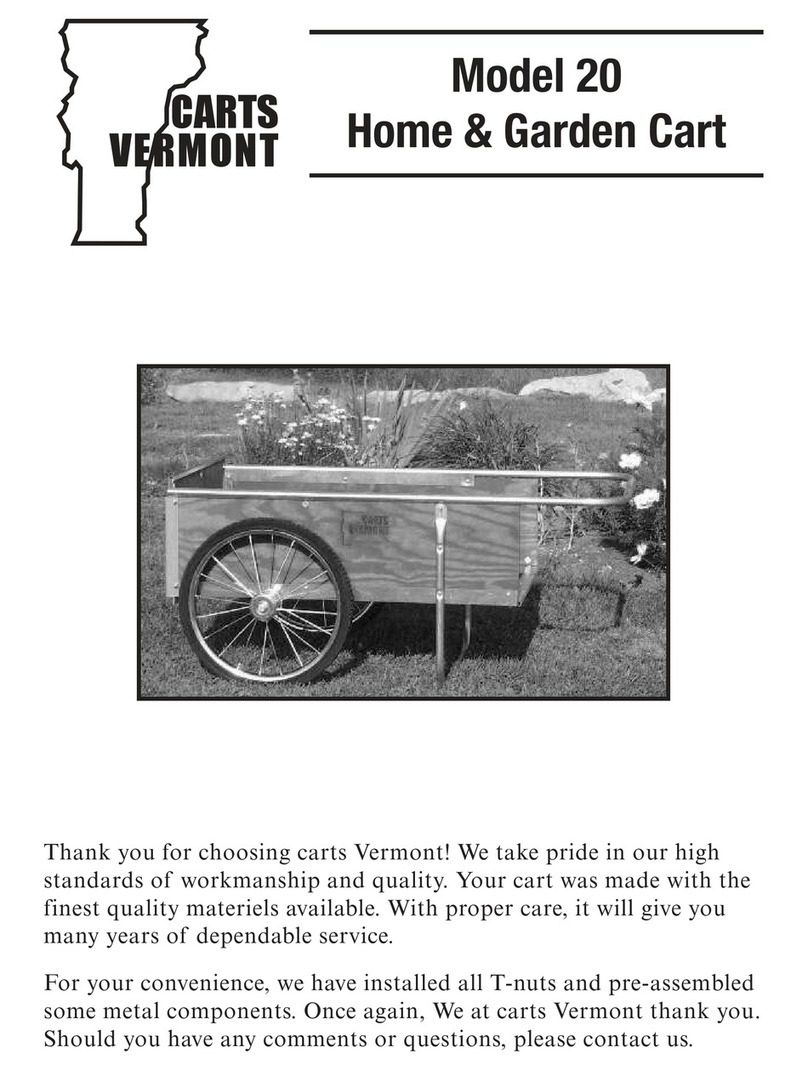
Carts Vermont
Carts Vermont 20 manual
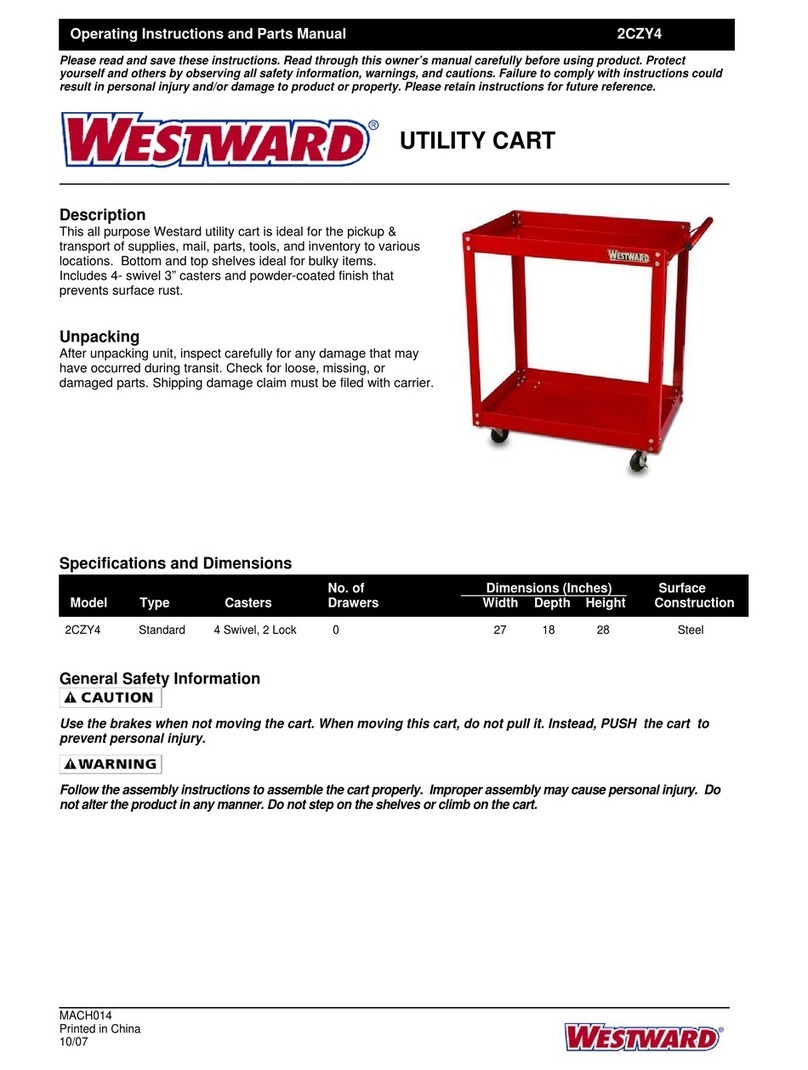
Westward
Westward 2CZY4 Operating instructions and parts manual
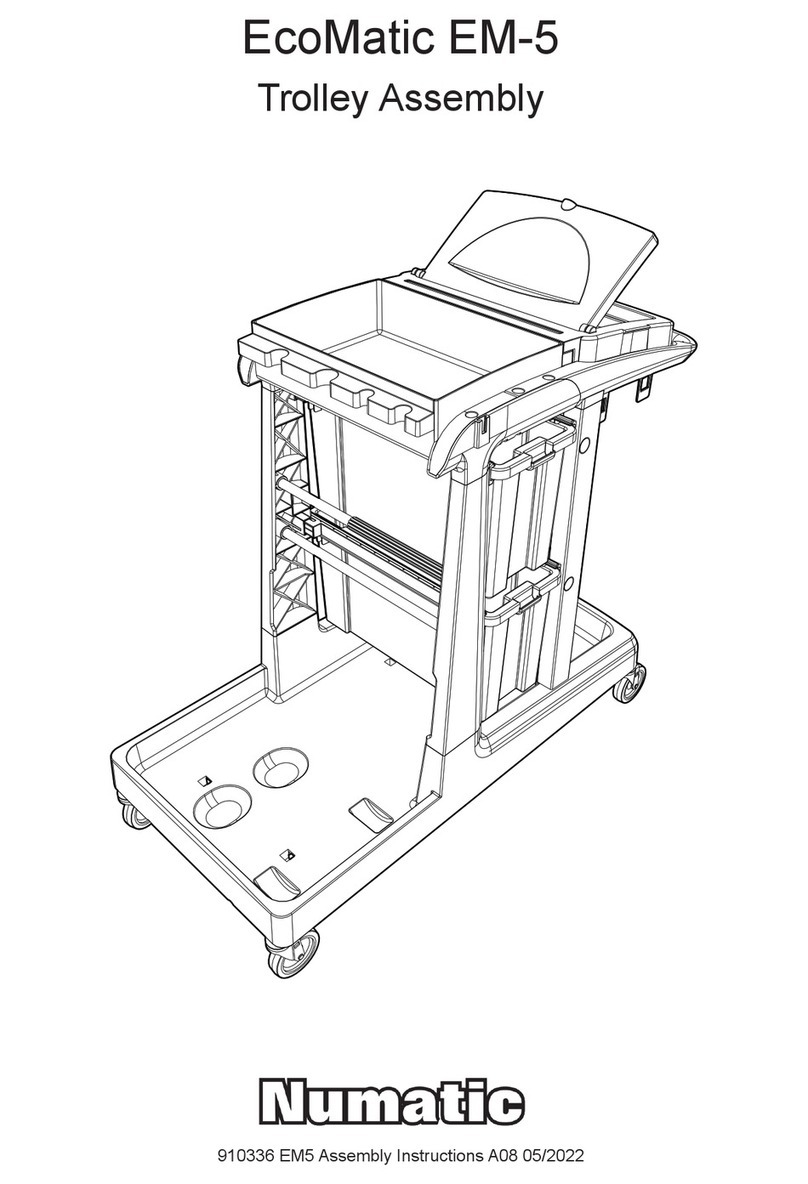
Numatic
Numatic EcoMatic EM-5 Assembly
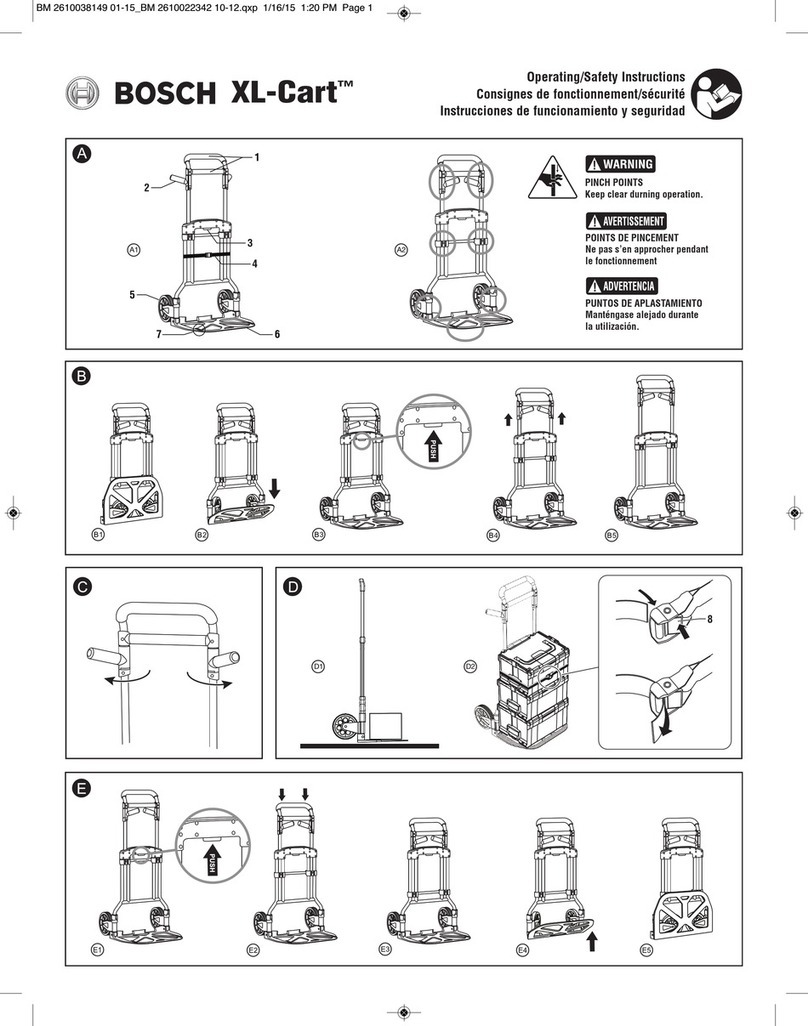
Bosch
Bosch XL-Cart Operating/safety instructions

Tennsco
Tennsco Modular Cart Top Component Assembly Assembly Instructions/Parts Manual

Clam
Clam POLAR TRAILER HD MAX manual
